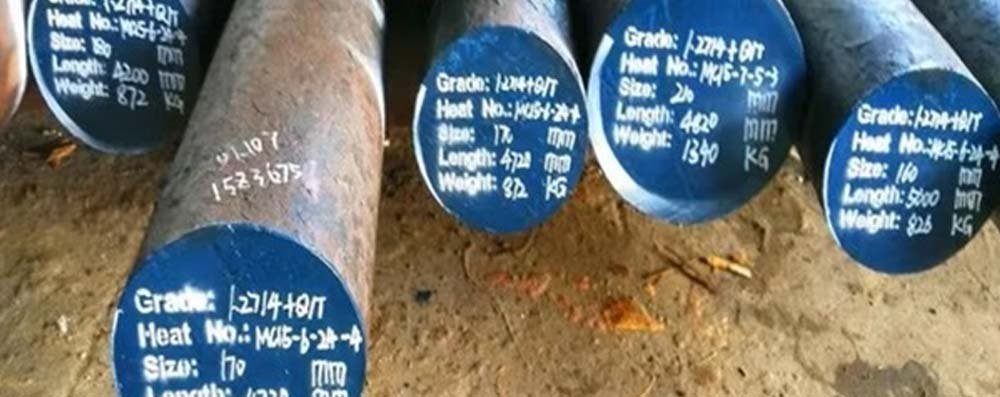Introduction
K310 is a high-performance cold work tool steel manufactured to deliver outstanding toughness, compressive strength, and wear resistance. It is suitable for use in blanking, punching, forming, and trimming tools, especially where dimensional stability, edge retention, and resistance to cracking are essential. K310 is a high-carbon, high-chromium steel similar to DIN 1.2080 / AISI D3, offering excellent hardness and wear resistance after heat treatment.
Properties of the K310 Die Steel:
- High wear resistance due to high carbon and chromium content.
- Excellent dimensional stability during heat treatment.
- High compressive strength, making it suitable for cold forming tools.
- Good resistance to abrasion and sliding wear.
- Air hardening tool steel with minimal distortion.
Typical Applications:
K310 is widely used in tooling applications where high wear resistance is critical but impact load is limited.
- Cold forming tools
- Punches and dies
- Cutting and shearing blades
- Press tools
- Trimming tools
- Wire drawing dies
- Plastic molds (requiring high wear resistance)
Chemical Composition:
| Element | Content (%) |
| Carbon (C) | 2.00 – 2.30 |
| Chromium (Cr) | 11.00 – 13.00 |
| Manganese (Mn) | 0.20 – 0.60 |
| Silicon (Si) | 0.10 – 0.60 |
| Vanadium (V) | ~0.10 max |
| Phosphorus (P) | ≤ 0.03 |
| Sulfur (S) | ≤ 0.03 |
| Iron (Fe) | Balance |
Mechanical Properties (After Heat Treatment):
| Property | Value |
| Hardness (HRC) | Up to 60 – 62 HRC |
| Compressive Strength | > 2000 MPa |
| Toughness | Moderate |
| Wear Resistance | Excellent |
| Dimensional Stability | Excellent |
Note: Mechanical properties vary based on heat treatment and final application condition.
Physical Properties:
| Property | Value |
| Density | 7.7 – 7.8 g/cm³ |
| Modulus of Elasticity | ~210 GPa |
| Thermal Conductivity | 20 – 25 W/m·K |
| Specific Heat Capacity | ~460 J/kg·K |
| Coefficient of Expansion | 10.5 x 10⁻⁶ /°C |
Forging:
- Forging Temperature: 950°C – 1100°C
- Do not forge below: 900°C
- Cool slowly in the furnace or sand to avoid cracking.
- Re-annealing is recommended after forging to restore structure.
Heat Treatment:
Annealing
- Temperature: 850°C – 880°C
- Cooling: Slow furnace cooling
- Hardness after annealing: Max 240 HB
Hardening:
- Austenitizing Temperature: 950°C – 1000°C
- Quenching Medium: Air or oil
- Cooling: Air cooling preferred to reduce distortion.
Tempering:
- Temperature: 150°C – 500°C
- Hardness: Up to 62 HRC after hardening and tempering
- Double tempering recommended for best dimensional stability.
Tempering curves are available from tool steel suppliers for precise hardness targets.
Corrosion Resistance:
- Poor corrosion resistance; not stainless.
- Protective oil coating or surface treatment recommended for storage.
- For corrosion-sensitive applications, consider stainless tool steels (e.g., 1.2083).
Machinability:
- Machinability rating: Fair to moderate
- Best machined in the annealed condition.
- Carbide tools recommended for hardened material.
- Machining in hardened condition should be avoided unless necessary.
Weldability:
Not recommended due to high carbon content.
If necessary:
- Preheat to 250°C – 350°C
- Use suitable tool steel filler rods
Available Form:
- Flat Bars
- Rounds
- Squares
- Forged Blocks
- Ground Finish Bars
- Custom dimensions on request
Dimensional Tolerances:
- Supplied as per DIN, EN, or customer-specific tolerances
- Available in standard tool steel stock sizes or cut-to-length
- Ground or peeled finishes available for high-precision applications
Conclusion:
K310 Die Steel is a premium-grade cold work tool steel ideal for tooling components requiring exceptional wear resistance, dimensional stability, and high surface hardness. It performs excellently in dry and abrasive environments with minimal distortion. Though its toughness is moderate, proper heat treatment ensures a reliable and long-lasting performance for dies, punches, and wear parts.
Related Products : D2, DB6, DIN 1.2714, DIN 1.2080, DIN 1.2379, DIN 1.2343, DIN 1.2344, EN31, H11, H13, OHNS, HCHCR, M2, P20+S, P20, P20+Ni, K310, Maps


